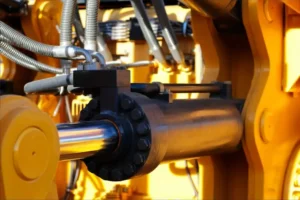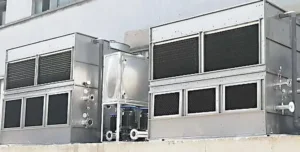
When a steel plant smelting aluminum, the choice between an electric induction melting furnace or a gas-fired melting furnace depends on a variety of factors, including production scale, energy costs, equipment costs, production efficiency and the quality of metal required.
Characteristics of Aluminum
- Lightweight: Aluminum is a lightweight metal with a density of about 2.7 grams/cubic centimeter, which is about one-third that of steel. This makes aluminum an ideal material for manufacturing lightweight vehicles, aircraft and ships, helping to reduce overall weight and improve energy efficiency.
- Good processability: Aluminum has good processability and can be made into products of various shapes and sizes through rolling, stretching, extrusion and other processes. This makes aluminum widely used in manufacturing industries, including automotive parts, building materials, electronics, and more.
- Good thermal and electrical conductivity: Aluminum has good thermal and electrical conductivity, making it an ideal choice for manufacturing radiators, wires, cables and other products.
- Corrosion resistance: Aluminum has good corrosion resistance and can maintain stability in most environments. This property makes it a common choice for outdoor construction materials and chemical containers.
- Recyclability: Aluminum is a recyclable material and its recyclability makes it an environmentally friendly option. Recycling aluminum can significantly reduce energy consumption and resource waste.
- High melting point: Aluminum has a high melting point, about 660°C (1220°F).
- Non-magnetic: Aluminum is a non-magnetic metal, which makes it an ideal material for manufacturing electromagnetic devices and electronics because it does not interfere with electromagnetic fields.
- Reflectivity: Aluminum has good light reflectivity, which makes it a common material for manufacturing products such as mirrors, car light reflectors and solar reflective panels.
Aluminum is lightweight, has good workability, strong thermal conductivity, corrosion resistance, and is recyclable, making it widely used in various fields and playing an important role in modern industry and life.

Advantages and Disadvantages of Electric Induction Furnace and Gas Furnace
Electric induction melting furnace:
- Advantage:
- Suitable for high-temperature metal smelting, such as aluminum, etc.
- Since electrical energy is used as the heating source, the temperature can be controlled more easily.
- Environmentally friendly, no waste gas or wastewater is produced.
- Disadvantage:
- The initial investment cost is high and the equipment is expensive.
- Higher requirements for power supply may lead to higher energy costs.
Gas melting furnace:
- Advantage:
- Compared to electric induction furnaces, the initial investment cost is lower.
- Various types of fuel can be used, including natural gas, LPG, etc., reducing energy costs.
- High production efficiency, rapid heating and cooling.
- Disadvantages:
- For some high-temperature metals, it may not be as effective as an induction furnace.
- The combustion process produces exhaust gases that need to be treated.
- Temperature control is relatively complex.
Summarize about smelting aluminum
If you need to melt a small amount of aluminum within a few hundred kilograms, you can choose an electric induction melting furnace. If you need to melt more than 1 ton and dozens of tons of aluminum, it is recommended to choose a gas melting furnace.







